Douglas SBD Dauntless Bomber: When Speed Is Really Not Important
Continuing the theme of airplanes that did things during World War II, answering one of the questions, I want to say just a few words.
Well, Flying Fortresses are not interesting to me as objects of consideration. Well, what a merit: they gathered in the 500-1000 planes, took a couple of hundred fighters with them, flew and turned another city into rubble?
Sorry, the flying club from 1000 Fortresses - weapon Pithecanthropus. You can criticize Ju-87 and Pe-2 as much as you like, but these were swords for accurate work. Therefore, all these B-17, B-24 and B-29 will be left for a very distant future.
And our hero today was from a completely different opera. Douglas SBD "Dauntless" (will go further in Russian transcription), perhaps this is the most famous naval US bomber.
History it is very noteworthy in that it was decommissioned before the start of the war, and it turned out that the plane took part in all the major naval battles. Moreover, it was the “Fearless” who drowned the cream of the Japanese fleet throughout the war, and in the 1942 year it was the crews of these aircraft who sentenced more Japanese ships than all other sea aircraft combined.
I would translate Dauntless as Reckless. Firstly, there were no towers, and secondly, in order to fight on this bomber, one had to be a little less titanium guy than the Swordfish pilot.
So, the story of the hero of the Battle of Midway begins, which became the Pacific Battle of Kursk and after which the Japanese imperial fleet, by and large, said: 終 то り, that is, "everything."
It all started in 1932, when a certain John Northrop left Douglas Aircraft to establish his own company in El Segundo (California).
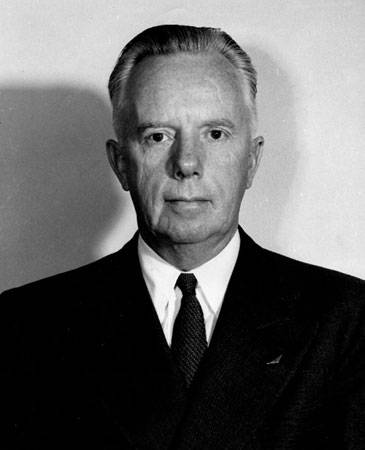
The Douglas were practical guys, and considering Northrop a genius in terms of aviation engineering, helped with money and generally tried to make friends, since it happened.
Looking ahead, I’ll say that it was worth it. Northrop really was a cool engineer who created truly advanced aircraft. Only sometimes they were very expensive. And so - P-61 "Black Widow" and B-2, who went into the series after the death of Northrop - as an example.
During his time in his own company, Northrop created several really successful aircraft that differed in very decent characteristics (Gamma and Delta), which worked for a long time on US mail lines.
But Northrop's finest hour came in 1934, when the Naval Bureau of Aeronautics announced a competition to develop a new specialized dive bomber. It's time to change a bunch of old biplanes of different brands for something more modern.
Brewster, Martin and Vout proposed biplanes for the competition, because the Northrop draft submitted by the all-metal monoplane with load-bearing skin and lower wing position was recognized as the best.
The prototype was called XBT-1 and went up the test steps up.
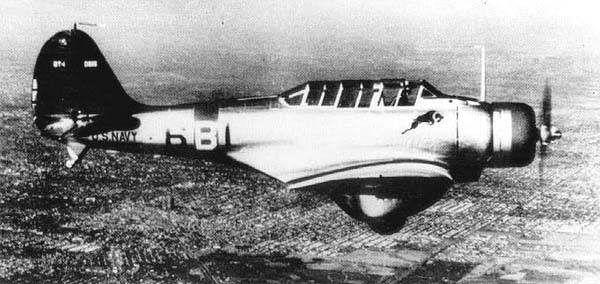
The aircraft had many innovations and advanced solutions that had not been applied before when designing aircraft. The aircraft was an all-metal low-wing, the main landing gear retracted into fairly large fairings on the lower part of the wing, leaving the lower parts of the wheels half open.
For the sake of the strength that a diving bomber needs, the lead designer Heinemann used a honeycomb-free wingless wing structure. This is not an innovation, such a wing was on Northrop’s first Alpha postal plane, and then it was successfully used by Douglas in its DC.
But a problem arose: the honeycomb design of the wing did not allow the wing folding mechanism to be placed, but ordered a sea-based aircraft!
Oddly enough, but the XBT-1 was the only aircraft with a wing of this design, adopted by the US Navy. In order to somehow compensate for the lack of folding wings, Heinemann reduced the size of the aircraft as much as possible. As a result, it was one of the most compact bombers in the world.
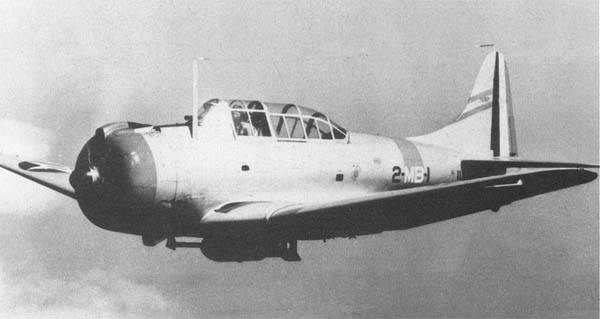
Then there were tests, as a result of which in the 1936 year the US Navy ordered a series of fifty-four vehicles under the designation BT-1. New dive bombers became part of the air groups of the new aircraft carriers "Yorktown" and "Enterprise".
And then the trouble started. The new bombers simply showed a bunch of problems that had to be taken more than seriously. Exchange rate instability at low speeds, low ailerons and rudders at low speeds, and the aircraft’s ability to spontaneously start spinning a barrel with a sharp increase in engine speed, generally led to several fatalities.
In general, the Naval Bureau decided not to order the BT-1 anymore.
Everything seemed to be? But no. The pragmatism of the Americans played a certain role here, and the contract included the costs of creating the next prototype. This saved everything, and while the bureau was feverishly thinking about what to do with the suddenly flightless happiness of BT-1, Northrop calmly analyzed what had happened, made conclusions and began work, fortunately, the funds for this were also laid down in the contract.
The engine was replaced (Twin Wosp Junior with the more powerful 1000-strong Wright XR-1820-32 Cyclone), the two-blade propeller was replaced with a three-blade, and even variable pitch. And nothing! XBT-2 did not show anything different from its predecessor. The problems remained at the same level.
Northrop did not give up, and after agreeing with NASA, he drove the plane into the wind tunnel. And finally, the source of the problems was found.
The bomber was aerodynamically ennobled. The main achievement in this regard was the fully retractable chassis. The hefty fairings of the semi-retractable landing gear disappeared from the lower surface of the wings and the main pillars now completely folded in the transverse plane, removing the wheels in the niches of the lower fuselage. The cabin light has also been redesigned. Heinemann went over the 21 version of the tail and 12 different aileron profiles before a satisfactory configuration was found.
While the lead designer fought with the machine, Northrop lost to Douglas and surrendered. And the seemingly independent Northrop company has become part of Douglas, from which, in fact, has budged.
But the plane passed all the tests and in 1938, a new order for 144 of the aircraft, called SBD-1 (scout bomber Douglas - Douglas reconnaissance bomber) followed. The change from B to SB was due to the fact that the abbreviation "B" was assigned to multi-engine bombers.
Although the renaming did not at all entail a review of combat missions.
However, the plane was "damp." Weapons (two directional synchronized 12,7-mm machine guns and one for protecting the rear hemisphere 7,62-mm machine gun) took place, bombing weapons too (one bomb weighing up to 726 kg on the fuselage pylon, and two bombs weighing up to 45 kg or two depth charges on wing pylons) was also present, but there was no reservation at all.
Despite the lack of armor protection for the crew and some other jambs, the aircraft was put into service and the first SBD-2 received aircraft carriers Enterprise and Lexington.
They were the first to receive a baptism of fire, since on the fateful morning of December 7 on December 1941 the Enterprise was in the Pearl Harbor area, returning after the delivery of six Wildcats to Wake Island.
Eighteen SBD-2s were lifted into the air for reconnaissance in the area west of the aircraft carrier before approaching Pearl Harbor and fell into a nightmare arranged by Japanese aircraft.
Seven SBDs were shot down, but the Americans shot down two Zeros. So the bomber opened his combat account in that war.
And just three days later, on December 10, Lieutenant Dixon destroyed the submarine of the Japanese Imperial Navy I-70. The first enemy warship sunk by the United States in World War II was sunk by the Downtless. And - I note - far from the last.
Further more. After Pearl Harbor, Americans mostly raided Japanese positions, rather of an alarming plan. But in the spring of 1942 of the year, protecting Australia from a possible attack by the Japanese fleet, the Americans staged a battle called the Battle of the Coral Sea.
And here "Reckless" for the first time showed their temper. On May 7 they drowned the light aircraft carrier “Shoe”, and on May 8 they very seriously hung a full-fledged strike aircraft carrier “Sekak”. Three bombs disabled the aircraft carrier, and he went for repairs.
Yes, the Japanese did not stay to cry in the corners and drowned the Lexington, but they refused to conquer New Guinea and Australia.
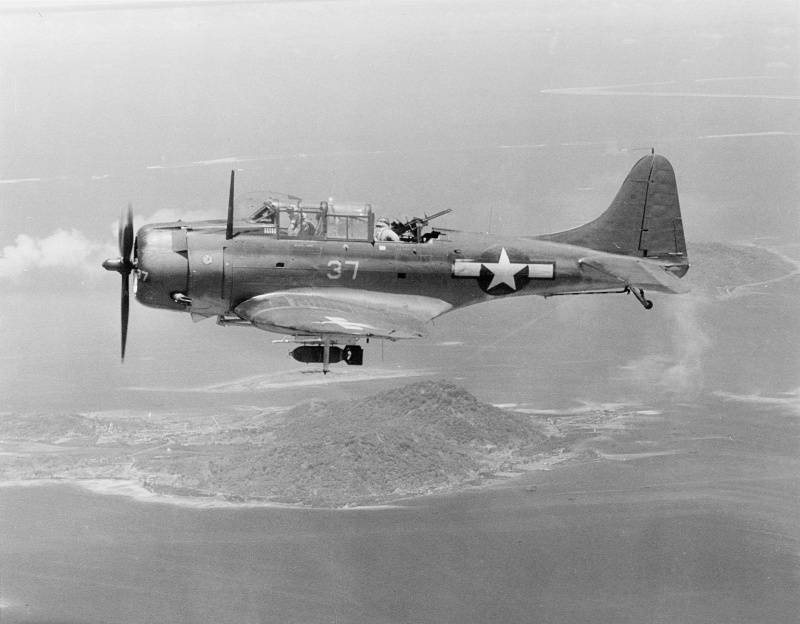
At the end of the spring of 1942, the SBD-3 appeared, which was a finally brought to mind prototype. All tanks were protected, bulletproof glass appeared in the cockpit light, crew armor protection, an 7,62-mm machine gun that protected the rear hemisphere was replaced by a pair of the same machine guns.
Next was the battle of Midway.
Everyone, in general, is aware of how Admiral Nagumo made a mistake (and more than once), everyone is already aware, we should focus on the tactics of the work of the Americans.
Yes, without fighter cover, the Devastator torpedo bombers suffered catastrophic losses from Zero attacks and anti-aircraft artillery fire. Of the forty-one torpedo bombers participating in the attack, only four returned to their ships.
But while the Japanese fighters were busy finishing off the latest TBDs, fifty Dountlesss approached at a height. Fighters that worked on torpedo bombers flying at low altitude simply did not have time to do anything. And the diving "Reckless" did their job.
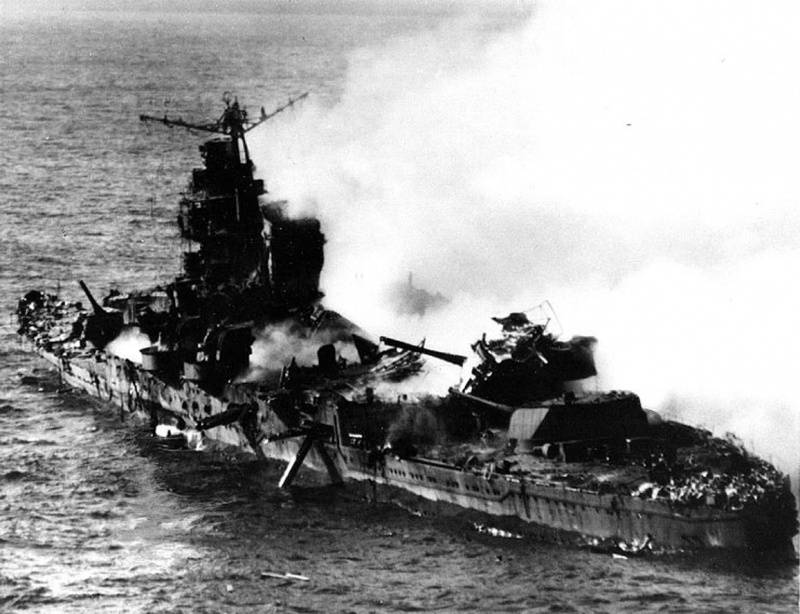
“Akagi”, “Kaga” and “Soryu”, whose decks were filled with planes preparing for take-off, loaded and equipped with bombs and torpedoes, turned into flaming ruins.
The Hiru, which was walking somewhat away from the main forces, remained intact and fired all its planes against Yorktown, which could not withstand the attacks and was left by the crew.
But the Downtowns from the Enterprise and the already failed Yorktown butchered Hiru as the god of the tortoise.
The Japanese ship burned for a long time and was eventually flooded by the crew the next day.
What is it? Not the most advanced and modern bomber in the company with the far from the most advanced and modern torpedo bombers (we will talk about the “Devastators” in the next article) drowned almost half of Japan’s aircraft carrier fleet in a few hours.
Many historians consider the Battle of Midway to be a turning point in the war in the Pacific Ocean. And they do it quite rightly.
Despite the status of a maritime aircraft, the Dountlesss, due to the lack of folding wings, could not be used on escort and light aircraft carriers, which the United States began to produce in awesome quantities.
In the 1943 year, the fleet command decided to replace the Dountlesss with the new SB2C Helldiver, but delays in the production of the Helldiver left the old men in service not only for the entire 1943 year, but also for half of the 1944.
But even when the Helldiver confidently registered on the decks of aircraft carriers, the Dauntlesses didn’t cut, but were handed over to the Marine Corps and fought from ground airfields as if nothing had happened until the end of the war.
What about the plane? The plane was good. When the handling problems were resolved, everything was just fine.
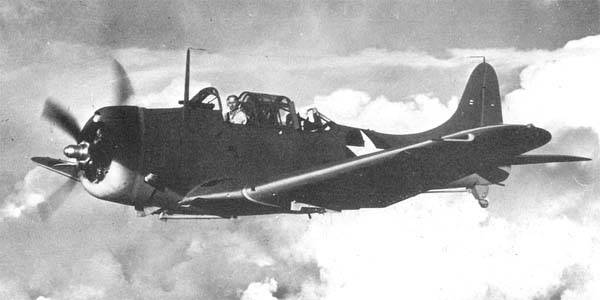
Yes, SBD did not shine, it is. But he didn’t really need it, since if enemy fighters were taken for the Dountlesss, a second volley of airborne weapons and the ability to maneuver would be more valuable.
The tail part of the fuselage and the center section were airtight, which ensured long unsinkability of the aircraft when landing on water. At least enough to have time to pull out a rubber raft with a supply of water and food from the cockpit of a radio operator. By the way, the pilot had a standard boat compass in the cockpit, which could be easily removed if necessary.
In general, a very well-deserved aircraft that has passed its combat path with flying colors and most importantly - efficiently.
LTX SBD-6
Wing span, m: 12,65;
Length, m: 10,06;
Height, m: 3,94;
Wing Area, m2: 30,19.
Weight, kg:
- empty aircraft: 2 964;
- normal takeoff: 4 318.
Engine: 1 x Wright R-1820-66 Cyclone 9 x 1350;
Maximum speed, km / h: 410;
Cruising speed, km / h: 298;
Practical range, km: 1 244;
Maximum rate of climb, m / min: 518;
Practical ceiling, m: 7 680.
Crew, prs: 2
Armament:
- two 12,7-mm synchronous machine guns;
- Two turret 7,62-mm machine guns;
- ventral mounts for bombs weighing up to 726 kg and underwing to 295 kg.
A total of 5 936 SBD "Dauntless" aircraft of all variants were produced.
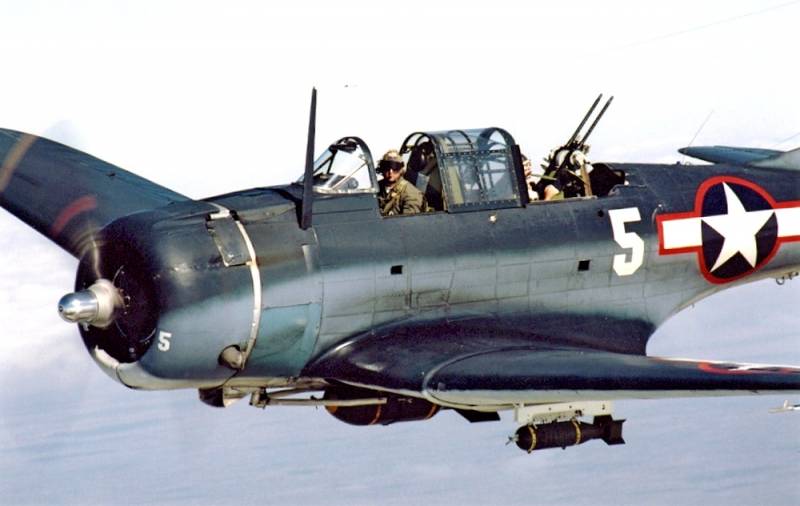
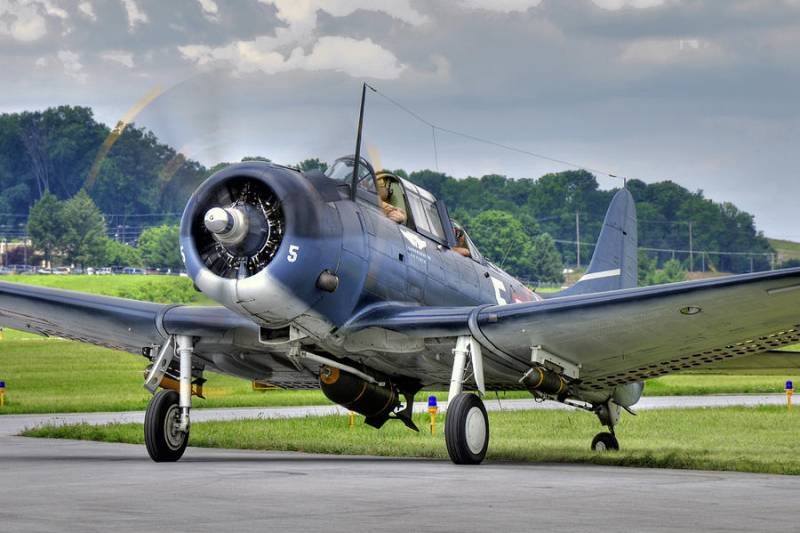
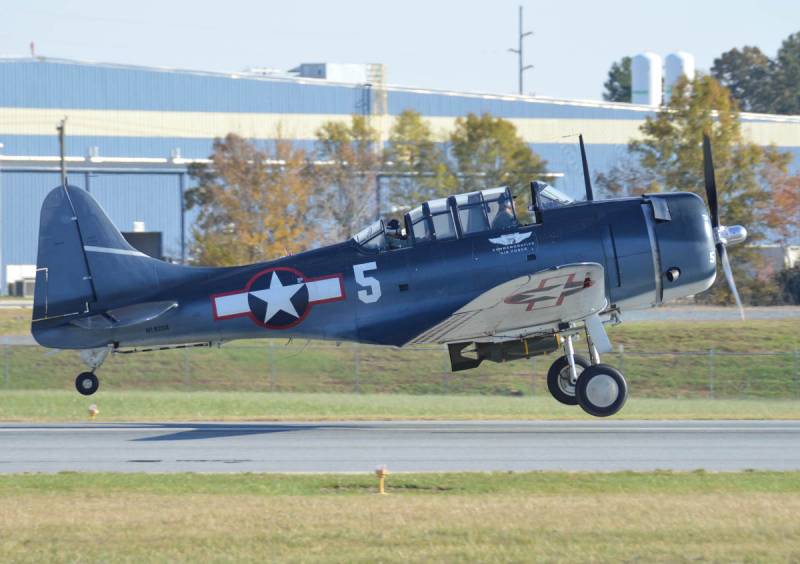
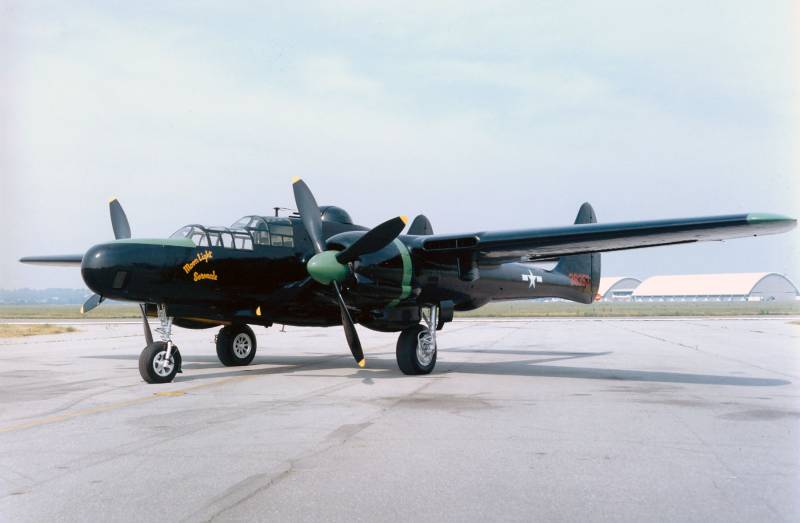
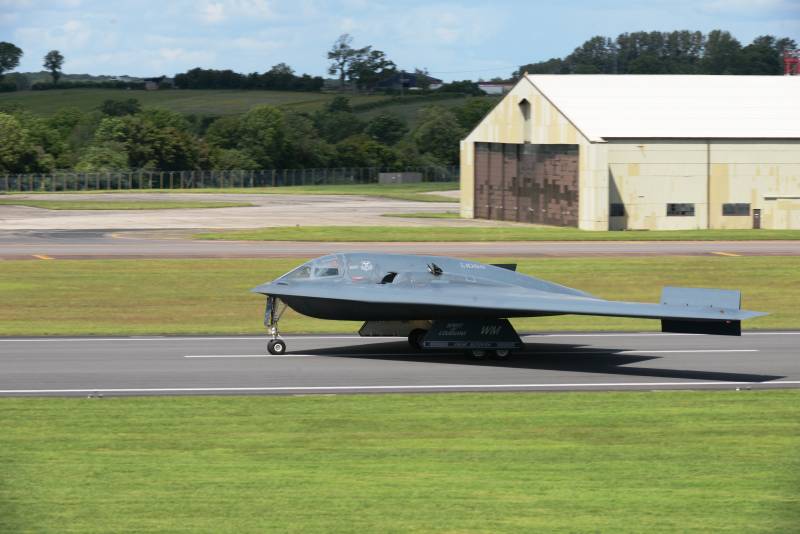
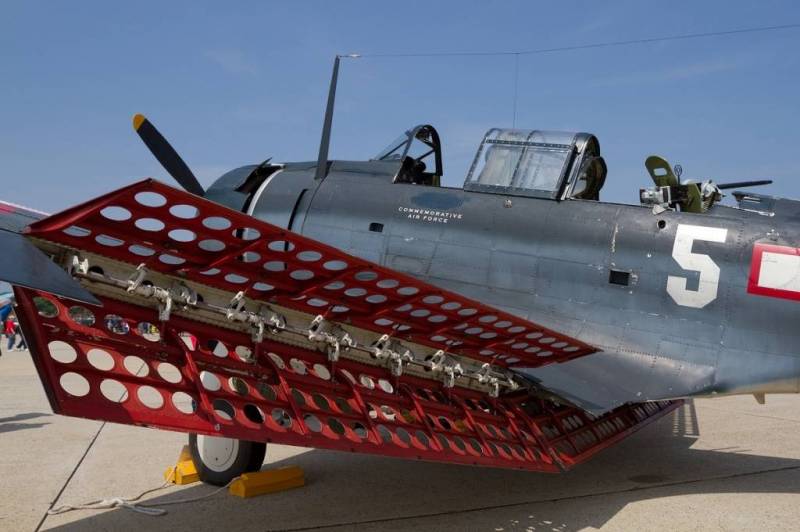
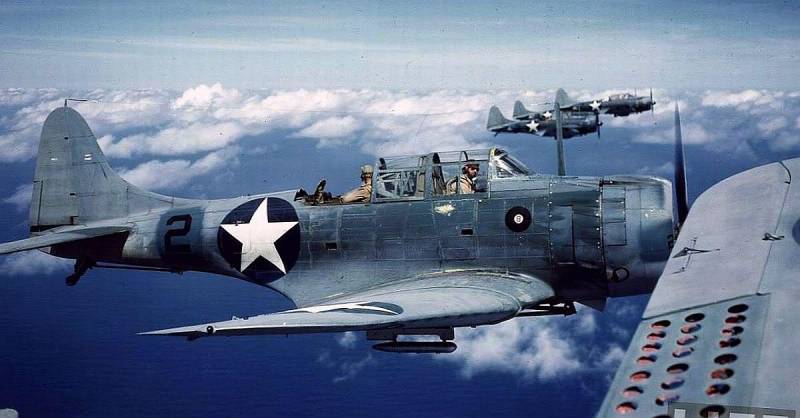
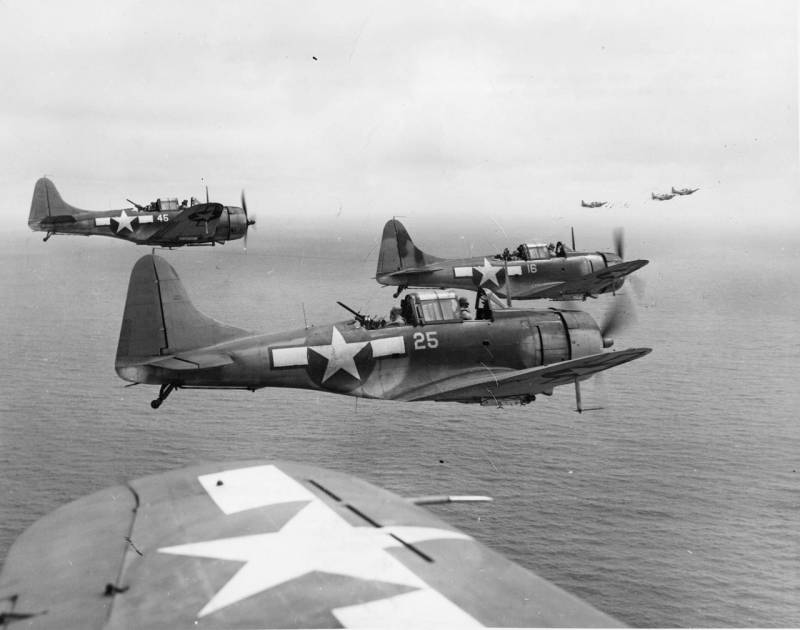
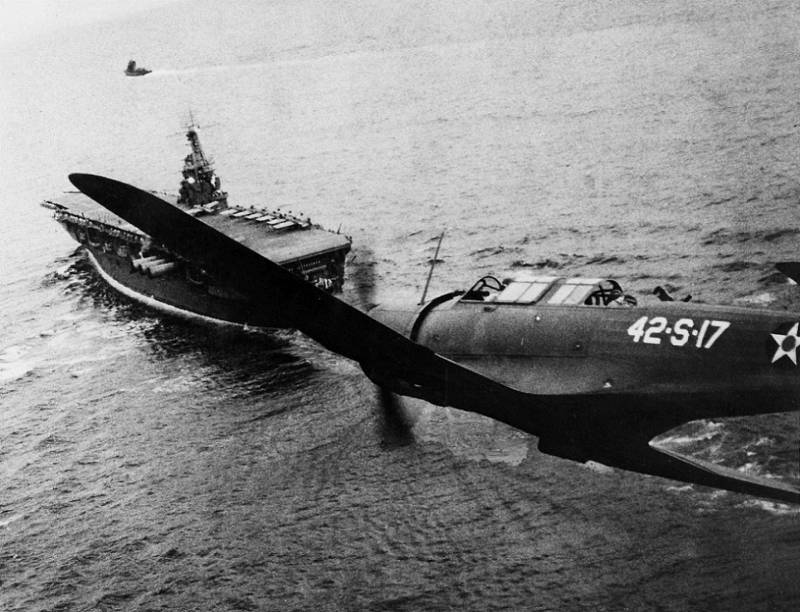
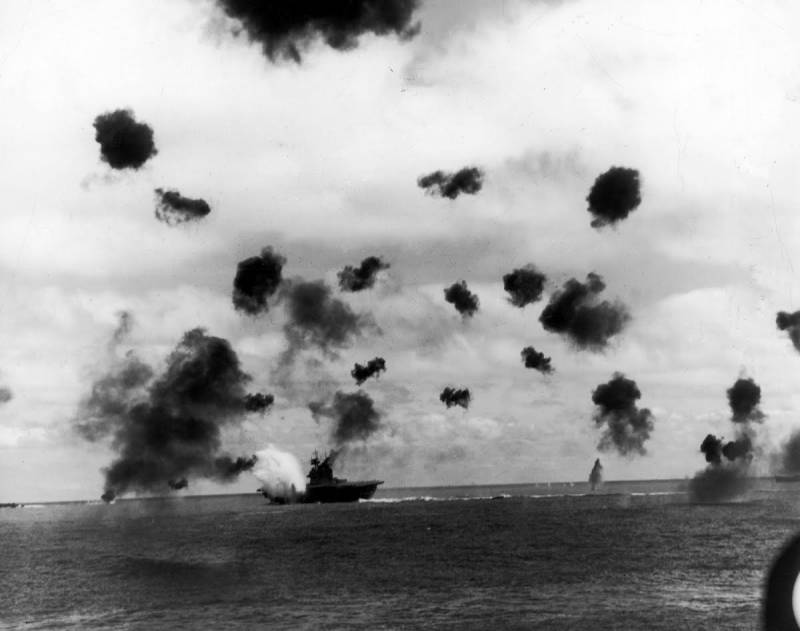
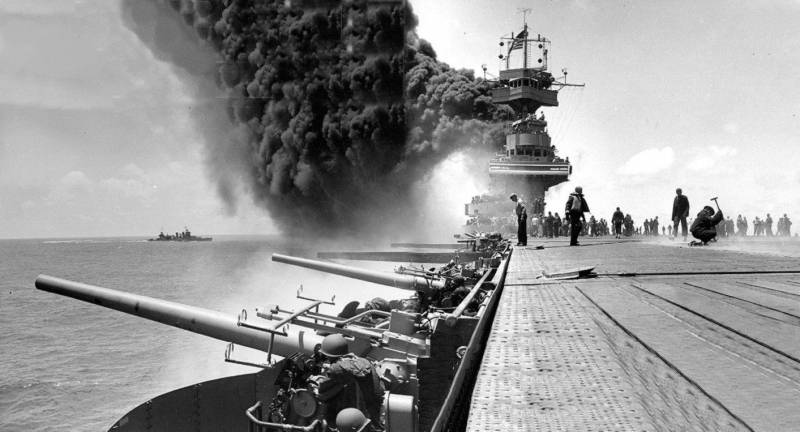
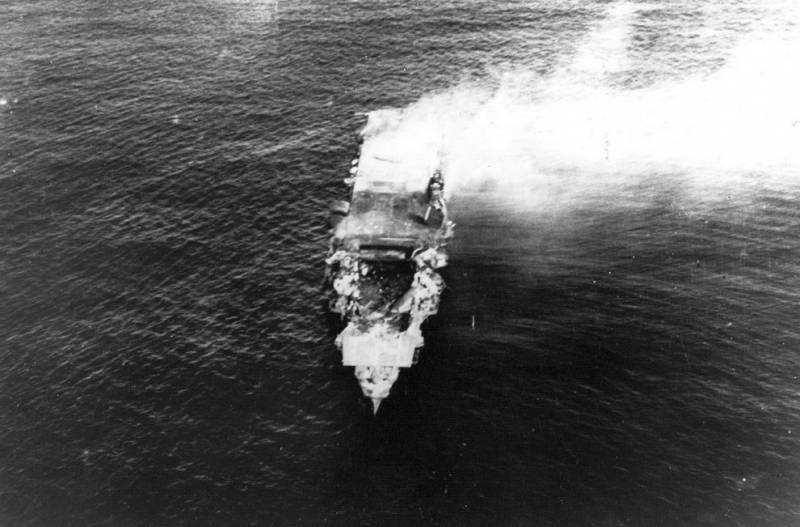
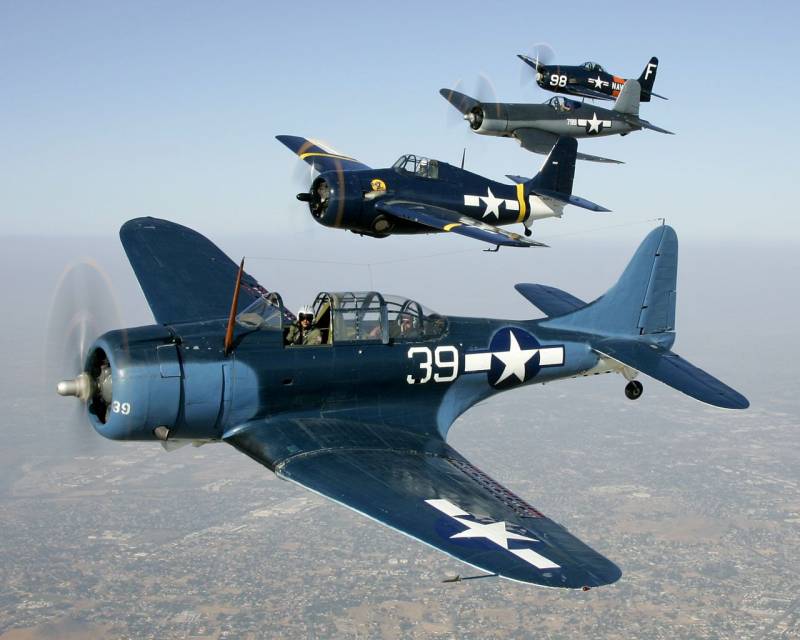
Information